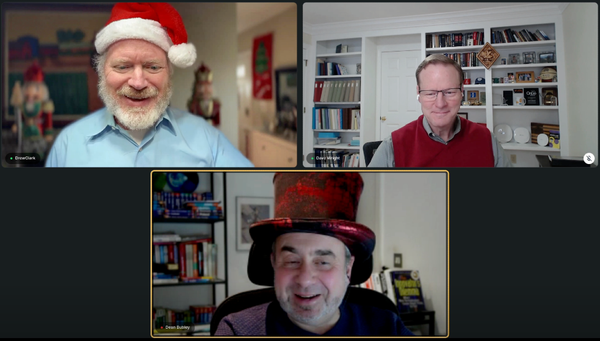Not Enough Attention on Locations Not in Need of Broadband in FCC Map, Conference Hears
More focus needs to be one removing unserviceable locations, says an observer.
Teralyn Whipple

WASHINGTON, February 16, 2023 – There are too many locations on the Federal Communications Commission’s broadband map that don’t need broadband, a virtual conference of the National Association of Telecommunications Officers and Advisors heard Monday.
The FCC released its first broadband draft map on November 18, 2022, which strives to represent location-by-location broadband availability and makes individual points available for location and service challenges. The commission said it has received over a million challenges, with those challenges “predominately” being to add missing locations.
But according to some observers, there is too much attention being given to locations that are missing from the fabric. Mike Conlow, director of network strategy at web hosting platform Cloudflare, said Monday there needs to be more attention given to removing locations that are not in need of broadband. Conlow is a knowledgeable expert on mapping, and participated in a panel on “Broadband Mapping: Are We on the Right Track or the Wrong Track?” at Digital Infrastructure Investment–Washington event.
Almost all counties on the map have more listed locations than the United States census depicts, said Conlow, even when accounting for business addresses. The problem only grows starker in rural counties, he continued.
This phenomenon occurs when buildings that are not residential addresses or businesses appear on the map as serviceable locations. This causes confusion in allocating funds from programs that have certain service requirements, such as the $42.5 billion Broadband Access, Equity and Deployment program of the National Telecommunications and Information Administration.
The FCC previously faced a conundrum when it turned out that part of the data – provided by internet service providers – on which it distributed money from its $9.2 billion Rural Digital Opportunity Fund in December 2020 was based on submissions that overrepresented areas that needed coverage. Some bidders were inadvertently committing to connect areas that didn’t need connecting. The dilemma forced a new-look commission to clawback awards and start anew with better data.
Since the debut of the FCC’s map, there have been four million challenges of provider-reported availability information and one million new locations picked up between the first and second versions of the map, said Eduard Bartholme of the FCC’s Consumer and Governmental Affairs Bureau.
Despite the map’s shortcomings, Conlow urged states to continue working to improve the map through the challenging process. The map will be useful when it is time for states to allocate funds to subgrantees of the BEAD fund, he said. The NTIA has said BEAD money will be allocated to the states based on the map by June 30.
The FCC is very “hands-on” with the broadband map, said Bartholme at the webinar. The map requires a cursory check to make sure challenges align with the right location and are filed correctly, said Bartholme, at which point the commission moves challenges to providers. Furthermore, the commission is required to adjudicate service disputes that are not resolved within 60 days of filing.
Challenges can be filed for individual locations directly through the map’s interface or through the bulk challenge process. The primary data collection method for states previous to the FCC’s challenge process was speed tests, which are not being accepted by the agency for the new broadband map.
Instead, states must turn to bulk crowdsourcing by encouraging residents to submit challenges through the map’s interface. Evidence of unsupported service claims include a service provider denying service installation, failing to schedule a repair or installation within 10 days of a request, or denying service claims.
Providers are required to concede or dispute challenges with 60 days of filing, after which the two parties have an additional 60 days to come to a consensus regarding the service received at that location, said Bartholme.








Member discussion